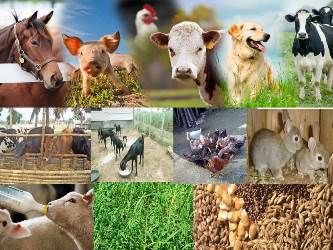



Received: 01-Feb-2022, Manuscript No. GJASLPAB-22-59162; Editor assigned: 03-Feb-2022, Pre QC No. GJASLPAB-22-59162 (PQ); Reviewed: 17-Feb-2022, QC No. GJASLPAB-22-59162; Revised: 21-Feb-2022, Manuscript No. GJASLPAB-22-59162 (R); Published: 28-Feb-2022, DOI: 10.35841/2408-5499.22.10.162
Improvements in nutrition (feed and water), animal health (veterinary care, home and breeding practices) and breeding and genetics over the past century and especially in the last 50 years have led to huge gains in livestock production and efficiency. Despite significant efforts in all these areas, genetic improvement plays and continues to play a significant role in enhancing the efficiency, stability and productivity of all livestock breeds. Increasing yields, using less resources and less prone to environmental stresses such as heat and disease. From the first breeding schemes and the advent of Artificial Insemination (AI) to the use of genetics and genetic modification techniques, zoologists have combined basic breeding principles with emerging technologies to make tremendous progress in capturing the genetic potential of our livestock species.
The identification of genetic areas that control economically important traits in livestock became popular in the 1990s using microsatellite markers. For this, comprehensive experimental designs (e.g. F2 population, granddaughter designs) are required to create a connection imbalance (LD) between some (dozens to hundreds) microsatellite markers and QTL. The development of genetic technologies and the identification of QTLs and causative genes have made it possible to increase the rates of genetic gain in livestock breeds using information on specific genes. In this approach, animal breeding values are estimated based on lineage, taking into account the information of a limited number of genetic markers. This strategy requires the detection of genetic markers that are directly considered (i.e. factor mutation) or are present in high LD with causal mutation.
Although it is widely accepted that the boom in the development of genomic technologies was driven by the first draft of the human genome in 2001, the idea of using genetic markers to enhance response to livestock selection was already discussed in the 1980s. The first extensive gene markers used were microsatellites, which were the most polymorphic repeating sequences across a gene. This type of genetic marker was widely used in the 1990s and 2000s for Quantitative Trait Locations (QTL) and the discovery of candidate genes for economically important traits in gene mapping and livestock production. However, the preferred type of gene marker used today is Single Nucleotide Polymorphisms (SNPs), which are genetically abundant, easier to find, and more expensive to use. These markers are available on commercial SNP chips and can be detected using sequencing technologies such as hologenome sequencing. In addition, due to the rapid development of computing power and bioinformatics tools are currently available. It is possible to incorporate genetic technologies into breeding schemes and continue to develop. Finally, these advances have led to the publication of complete genetic sequences for major livestock breeds over the past 20 years.
Artificial insemination is the insertion of semen directly into a woman’s reproductive tract through means other than copulation. Although the first successful use of AI was 200 years ago, the technology was not widely adopted in animal husbandry until the 20th century. Massive technological advances in Europe and the United States, beginning in the 1930s and 1940s, and the widespread growth of AI use, especially occurred in dairy livestock. Artificial insemination is an incredibly powerful tool for genetic improvement at various levels. Although fundamental in principle, AI is currently the most widely used reproductive biotechnology for livestock genetic improvement in the world. AI development and adoption in livestock has been the inspiration for many of the ARTs described below and has generally paved the way for public acceptance of reproductive interventions.
Over the past 20 years, In Vitro Fertilization (IVF) techniques have significantly improved, allowing for a wider adoption of technology in production systems that have already used ET as part of their breeding program profits. Instead of flushing the embryos out of the reproductive tract, ovarian oocytes can be expected directly from the donor female ovaries. These unfertilized oocytes are cultured, subjected to IVF, and subsequently transferred to embryonic females. The benefits of genetic enhancement of IVF are twofold.
Livestock production and efficiency have improved dramatically due to improvements in nutrition, animal health and breeding and genetics. Livestock genetic improvement plays and continues to play a key role in the progress of livestock farming by increasing productivity and sustainability for all livestock breeds. This chapter explores the broader contributions made by traditional breeding schemes, such as genomics and biotechnologies such as assisted reproductive technologies and genetic engineering. Although not entirely comprehensive, it provides an overview of the key developments and milestones that have contributed to the genetic improvement of livestock, along with the potential for continued growth.